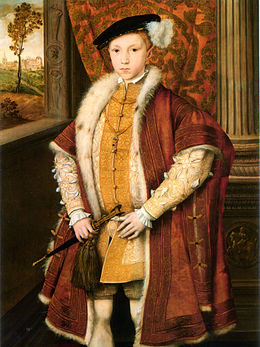
The House of Tudor was an English and Welsh dynasty that held the throne of England from 1485 to 1603. They descended from the Tudors of Penmynydd, a Welsh noble family, and Catherine of Valois. The Tudor monarchs ruled the Kingdom of England and the Lordship of Ireland for 118 years with five monarchs: Henry VII, Henry VIII, Edward VI, Mary I and Elizabeth I. The Tudors succeeded the House of Plantagenet as rulers of the Kingdom of England, and were succeeded by the Scottish House of Stuart. The first Tudor monarch, Henry VII, descended through his mother from the House of Beaufort, a legitimised branch of the English royal House of Lancaster, a cadet house of the Plantagenets. The Tudor family rose to power and started the Tudor period in the wake of the Wars of the Roses (1455–1487), which left the main House of Lancaster extinct in the male line.

Jasper Tudor, Duke of Bedford was the uncle of King Henry VII of England and a leading architect of his nephew's successful accession to the throne in 1485. He was a member of the Tudor family of Penmynydd.

The Palace of Beaulieu or Newhall is a former royal palace in Boreham, Essex, England, north-east of Chelmsford. The surviving part is a Grade I listed building. The property is currently occupied by New Hall School.

Henry Carey, 1st Baron Hunsdon,, was an English nobleman and courtier. He was the patron of the Lord Chamberlain's Men, William Shakespeare's playing company. The son of Mary Boleyn, he was a cousin of Elizabeth I.
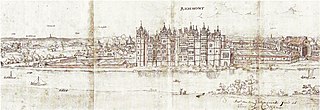
Richmond Palace was a Tudor royal residence on the River Thames in England which stood in the sixteenth and seventeenth centuries. Situated in what was then rural Surrey, it lay upstream and on the opposite bank from the Palace of Westminster, which was located nine miles (14 km) to the north-east. It was erected in about 1501 by Henry VII of England, formerly known as the Earl of Richmond, in honour of which the manor of Sheen had recently been renamed "Richmond". Richmond Palace therefore replaced Shene Palace, the latter palace being itself built on the site of an earlier manor house which had been appropriated by Edward I in 1299 and which was subsequently used by his next three direct descendants before it fell into disrepair.

William Carey was a courtier and favourite of King Henry VIII of England. He served the king as a Gentleman of the Privy chamber, and Esquire of the Body to the King. His wife, Mary Boleyn, is known to history as a mistress of King Henry VIII and the sister of Henry's second wife, Anne Boleyn.
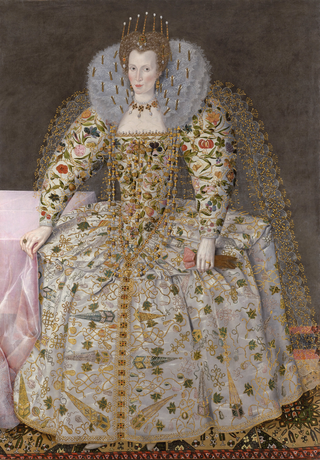
Catherine Howard, Countess of Nottingham, was a cousin, lady-in-waiting, and close confidante of Elizabeth I of England. She was in attendance on the queen for 44 years.

Hertford Castle is a Norman era castle built beside the River Lea in Hertford, the county town of Hertfordshire, England. Most of the internal buildings of the structure have been demolished.

Chenies Manor House in the parish of Chenies in Buckinghamshire, England, is a Tudor Grade I listed building once known as Chenies Palace, although it was never a royal seat nor the seat of a bishop. It was held by the Cheney family since 1180 and passed by marriage successively to the Semark and Sapcote families and thence in 1526 to the Russell family, Earls of Bedford, later Dukes of Bedford, by whom it was held for several centuries. Although the Russells soon abandoned Chenies as its main seat in favour of Woburn Abbey in Bedfordshire, Chenies parish church remains the site of the private "Bedford Chapel", the mausoleum still in use by that family.

Pishiobury, sometimes spelled Pishobury, was a manor and estate in medieval Sawbridgeworth, Hertfordshire. Its denomination as "Pishiobury" only emerged in the mid to late 19th century.
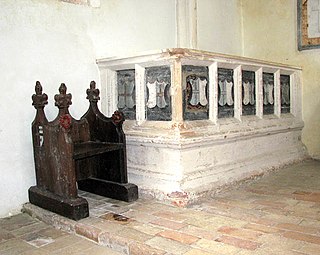
Shelton Hall is a large estate in the village of Shelton, Norfolk, England. The estate has around 72 acres (290,000 m2) of surrounding fields, the names of the fields include "Magic field" and "Echo field" and has a moat around the house and another smaller one in one of the fields. There are also many trees, shrubs and a bridge.
Woking Palace is a former manor house of the Royal Manor of Woking on the outskirts of Woking, near the village of Old Woking, Surrey.
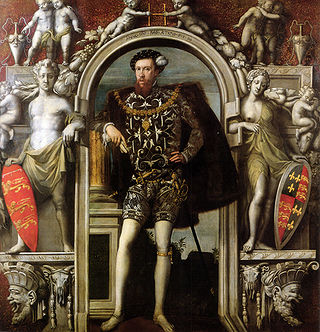
WilliamScrots was a painter of the Tudor court and an exponent of the Mannerist style of painting in the Netherlands.

Sir William Oldhall (1390?–1460) was an English soldier and Yorkist supporter, who served as Speaker of the House of Commons of England between 1450 and 1451.
The More was a 16th-century palace in the parish of Rickmansworth, Hertfordshire, England, where Catherine of Aragon lived after the annulment of her marriage to Henry VIII. It had been owned by Cardinal Wolsey. It lay at the northeast corner of the later More Park estate on the edge of the Colne flood plain. The Treaty of the More was celebrated here by Henry VIII and the French ambassadors. In 1527, the French ambassador, Jean du Bellay, thought the house more splendid than Hampton Court. Nothing now remains above ground. The site is a scheduled ancient monument.

Kings Langley Palace was a 13th-century royal palace which was located to the west of the Hertfordshire village of Kings Langley in England. During the Middle Ages, the palace served as a residence of the Plantagenet kings of England. It fell into disuse sometime during the 16th century and became a ruin. Today, nothing remains of the building except for some archaeological remains. The site is a scheduled ancient monument.
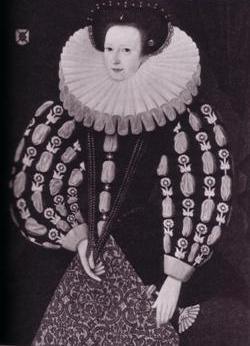
Anne Morgan, Baroness Hunsdon was an English official. She was the wife of Henry Carey, 1st Baron Hunsdon, by whom she had a total of 13 children. On 14 December 1595, she was appointed by Queen Elizabeth I of England to the office of Keeper of Somerset House; a post which she held for life. She also served the Queen as a Lady of the Privy Chamber.
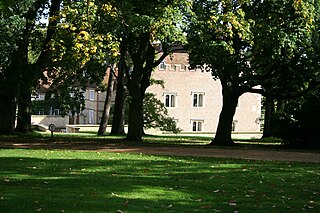
Rycote House the manor of Rycote, Oxfordshire, England, was a Tudor country house. First built in the early 16th century, the present site was rebuilt in the 1920s.
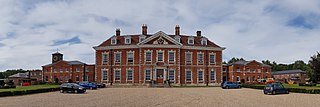
Beechwood Park was a mansion, near Markyate, Hertfordshire, England. It now houses Beechwood Park School.

Chesworth House is a former Tudor manor house, located a mile south of Horsham, West Sussex, England.

